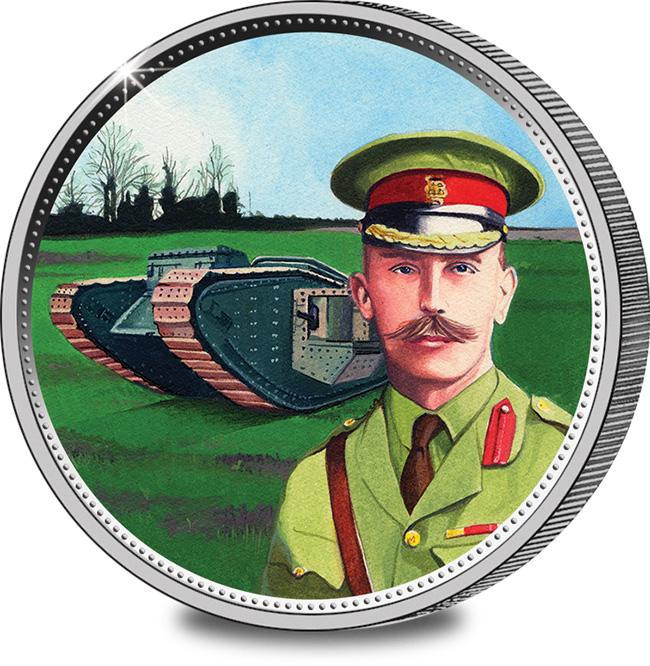
 |
Full name: Ernest Dunlop Swinton
Born: 21st October 1868
Invention/Achievement: The Tank, armoured
tracked fighting vehical
Date of introduction/Achievement: First
deployed in action, 1916
Died: 15th January 1951
|
The principle of placing troops, equipped with offensive
weapons, inside an armoured vehicle is centuries old. Leonardo
envisaged a primitive "tank". In 1903 HG Wells proposed the
steam powered "Land Ironclads" in a short story.
By 1914, armoured trains and cars were in use, though limited by
rail and terrain. The invention of all-terrain caterpillar
tracks, modern armour and the internal combustion engine made the
idea of an armoured fighting vehicle a practical proposition.
It's impossible to pin down one person as the inventor, but
Ernest Dunlop Swinton, as a proposer, champion and enabler, played
a central role in the tank's introduction to the battlefield.
Born in India in 1868, Swinton attended the Royal military
Academy, Woolwich and became an officer in the Royal Engineers.
He served in the second Boer War and received the Distinguished
Service Order. Before World War I, Swinton heard of the
American-made Holt Caterpillar Tractor and suggested to his
superiors that it might be useful for transport and artillery
towing over rough ground.
When war broke out, Swinton was posted to France as an official
war correspondent and conceived the idea of a tracked bullet-proof
vehicle that could travel over trenches and destroy enemy machine
guns. This time the idea was taken up, in fact by the Royal
Navy and it was Winston Churchill, First Lord of the Admiralty who
formed the Land Ships Committee in February 1915.
Their first design, "Little Willy" first ran in September 1915
and an improved trench-crossing model, codenamed "Mother", became
the template for future tanks.
In 1916 Swinton was promoted to Lieutenant Colonel and assigned
to train the first tank units going on to create the first tactical
instructions for armoured warfare.
First used with mixed results on 15th September 1916
during the Battle of the Somme, tanks were improved in design along
with reliability and played an increasingly important role in later
battles.
During World War II tanks were to be the crucial land weapon.
Swinton was promoted to Major General and was Colonel
Commandant of the Royal Tank Corps from 1934-38.
He died in Oxford in 1951.